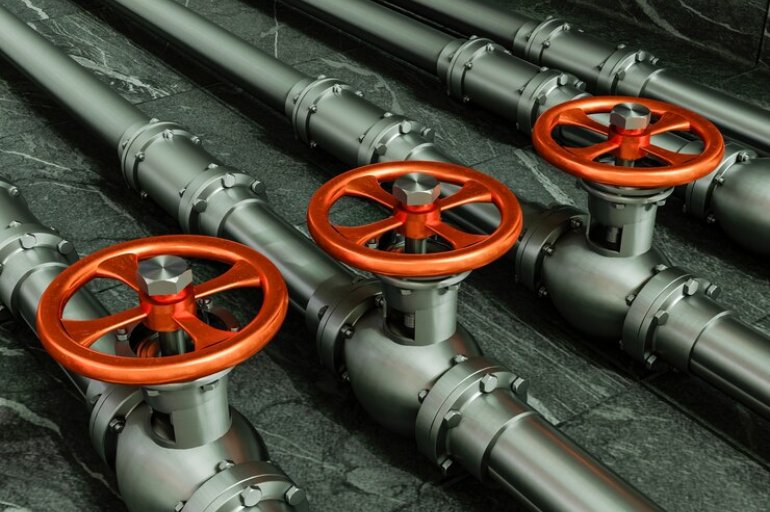Evolution of Valve Technology: From Early Designs to Modern Innovations

Introduction:
In the intricate world of industrial machinery and fluid control systems,
valves stand as silent sentinels, orchestrating the flow of liquids and
gases. From humble beginnings to today's cutting-edge innovations, the
evolution of valve technology has been a fascinating journey, mirroring the
advancements in engineering and industry. This blog delves into the
historical roots, milestones, and contemporary innovations that have shaped
the evolution of valve technology.
Chapter 1: The Birth of Valves - Ancient Roots
Valves, in their simplest forms, date back to ancient times. The Egyptians
and Greeks developed rudimentary valve-like devices to control water flow
for irrigation and other purposes. These early designs, often operated
manually, laid the groundwork for the more sophisticated valve systems that
would emerge centuries later.
Chapter 2: Steam Power and the Industrial Revolution
The advent of the Industrial Revolution marked a pivotal moment in valve
technology. Steam engines, powering the factories and machinery of the era,
required precise control over steam flow. Engineers responded with the
development of globe valves and gate valves, introducing the concept of
throttling and isolation for efficient steam management. These innovations
not only fueled industrial growth but also set the stage for further
advancements in fluid control.
Chapter 3: The Rise of Butterfly and Ball Valves
As industrial processes diversified, so did the need for more versatile
valve designs. The late 19th and early 20th centuries witnessed the
emergence of butterfly valves and ball valves. Butterfly valves,
characterized by a rotating disc, offered quick and efficient control of
fluid flow. Meanwhile, ball valves introduced a spherical closure mechanism,
allowing for tight shut-off and minimal fluid resistance. Both designs
became integral components in various industries, from petrochemicals to
water treatment.
Chapter 4: Automatic Control and Actuation
With the dawn of the 20th century, the integration of automatic control
systems became a focal point in valve technology. Actuators, driven by
pneumatic, hydraulic, or electric power, enabled valves to be controlled
remotely, responding to changing conditions in real-time. This automation
not only enhanced efficiency but also laid the groundwork for the
development of sophisticated control valves used in processes demanding
precise regulation of flow, pressure, and temperature.
Chapter 5: Materials and Manufacturing Advances
Advancements in materials science and manufacturing techniques have
significantly influenced valve technology. The shift from traditional
materials to alloys and polymers has enhanced durability, corrosion
resistance, and overall performance. Modern valves are designed to withstand
harsh operating conditions, contributing to the reliability and longevity of
fluid control systems.
Chapter 6: Smart Valves in the Digital Age
The 21st century has ushered in the era of smart valves, integrating digital
technologies to enhance functionality and efficiency. Smart valves are
equipped with sensors, actuators, and communication interfaces, allowing for
real-time monitoring and control. Industrial Internet of Things (IIoT)
connectivity enables predictive maintenance, reducing downtime and
optimizing overall system performance. The evolution of valve technology has
now embraced the era of Industry 4.0, where data-driven insights reshape the
landscape of fluid control systems.
Chapter 7: Sustainability and Environmental Considerations
In the contemporary engineering landscape, sustainability and environmental
considerations are paramount. Valve technology has responded with
eco-friendly designs, emphasizing energy efficiency, reduced emissions, and
responsible resource management. Innovations such as low-leakage valves and
those designed for optimal energy consumption reflect a commitment to
environmental stewardship in the evolution of valve technology.
Chapter 8: Challenges and Future Prospects
While the evolution of valve technology has been marked by remarkable
progress, challenges persist. Issues such as fugitive emissions, valve
leakage, and the need for greater reliability in extreme conditions drive
ongoing research and development. Looking to the future, emerging
technologies like nanotechnology and 3D printing hold the promise of further
revolutionizing valve design, offering solutions to current challenges and
unlocking new possibilities in fluid control.
Conclusion:
The remarkable journey through the evolution of valve technology brings us
to the present, where innovation, efficiency, and sustainability converge.
As we reflect on the milestones that have shaped the landscape of fluid
control systems, it's crucial to acknowledge the role of industry leaders in
driving these advancements. Among them, Oswal Industries Limited stands out
as a beacon of excellence in valve manufacturing.
Oswal Industries Limited has consistently demonstrated a commitment to
quality, precision, and technological innovation. As we navigate the
complexities of modern engineering, the contributions of companies like
Oswal Industries Limited underscore the importance of collaboration between
industry pioneers and technological innovators. Their expertise in crafting
reliable and cutting-edge valves has significantly impacted the evolution of
the field.
In the dynamic world of fluid control systems, where efficiency and
sustainability are paramount, partnering with a reputable valve
manufacturing company is essential. Oswal Industries Limited, with its
legacy of excellence, stands as a testament to the spirit of innovation that
propels the evolution of valve technology. Whether it's addressing the
challenges of today or embracing the possibilities of tomorrow, companies
like Oswal Industries Limited play a pivotal role in shaping the future of
fluid control systems.
As we move forward, let us continue to celebrate the achievements of the
past, embrace the innovations of the present, and look to companies like
Oswal Industries Limited to lead the way in the ever-evolving journey of
valve technology. Together, with a commitment to excellence and
sustainability, we pave the path for a future where fluid control systems
reach new heights of efficiency and reliability.
